Indonesia: Java, Bali, and Komodo Islands - September 10 - October 2, 2017
Today Indonesia is a republic with a presidential system. Power is concentrated in the central government.
After the resignation of President Suharto in 1998, the political & governmental structures have undergone major reforms.
The President of Indonesia is the head of state and government and commander-in chief of the armed forces.
The President appoints a council of ministers that are not required to be elected members of
the legislature. The 2004 presidential election was the first time the people directly elected the president.
The president has a maximum of 2 consecutive 5-year terms.
Indonesia lies on the Pacific Ring of Fire, where the Indo-Australian Plate and the Pacific Plate
are pushed under the Eurasian plate, where they melt at about 62 miles deep. A string of volcanoes
stretches across the country. The volcanic ash has resulted in fertile soils. Of the 400 volcanoes,
about 150 are active.
Part One - Java
Page Two - Yogyakarta area in Java
We flew from Jakarta to Yogyakarta, which is a
center of Javanese arts, including wood and silver
handicrafts and dance. This was another city where
you took your life in your hands trying to cross a street in heavy traffic.
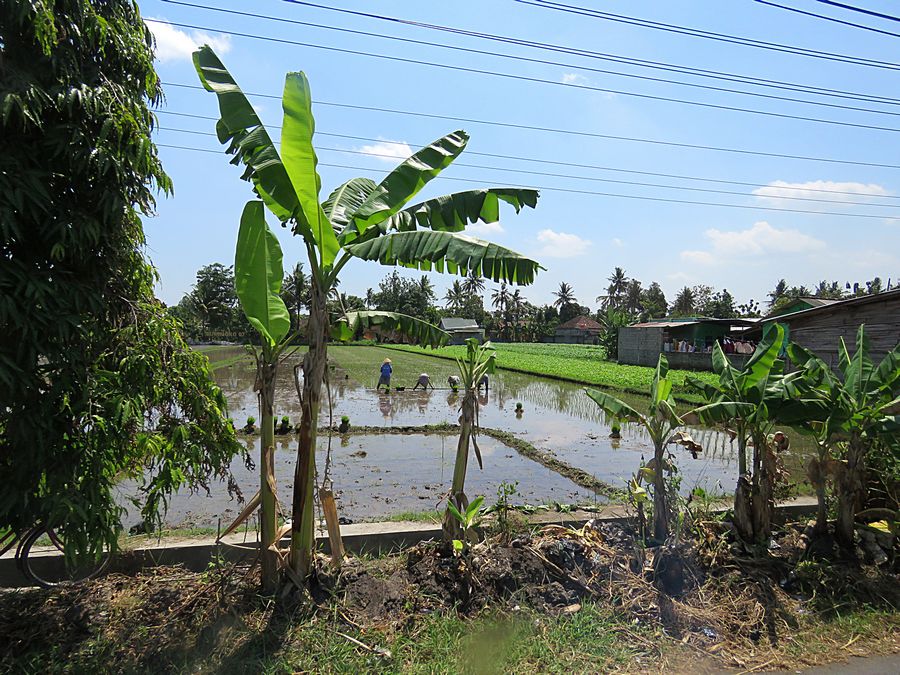
Rice paddy fields seen on our drive from the Yogyakarta airport.
The city is known as Jogja, for short. We were told any meal is not a meal
in Indonesia without rice. We had lots of rice!
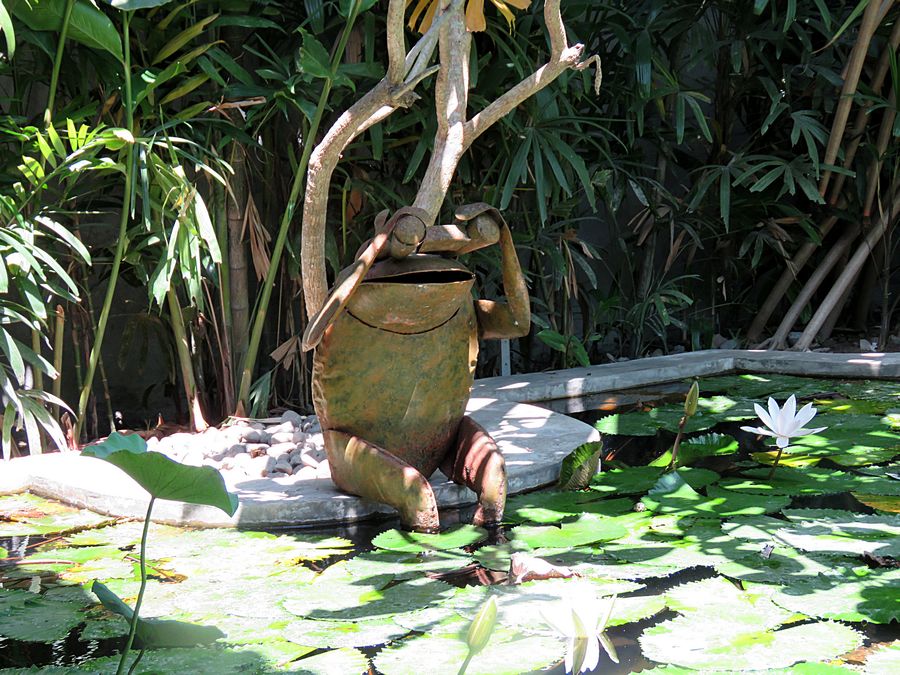
Our lunch spot had a beautiful garden seen from the
open air restaurant. Here is a cute frog looking through binoculars.
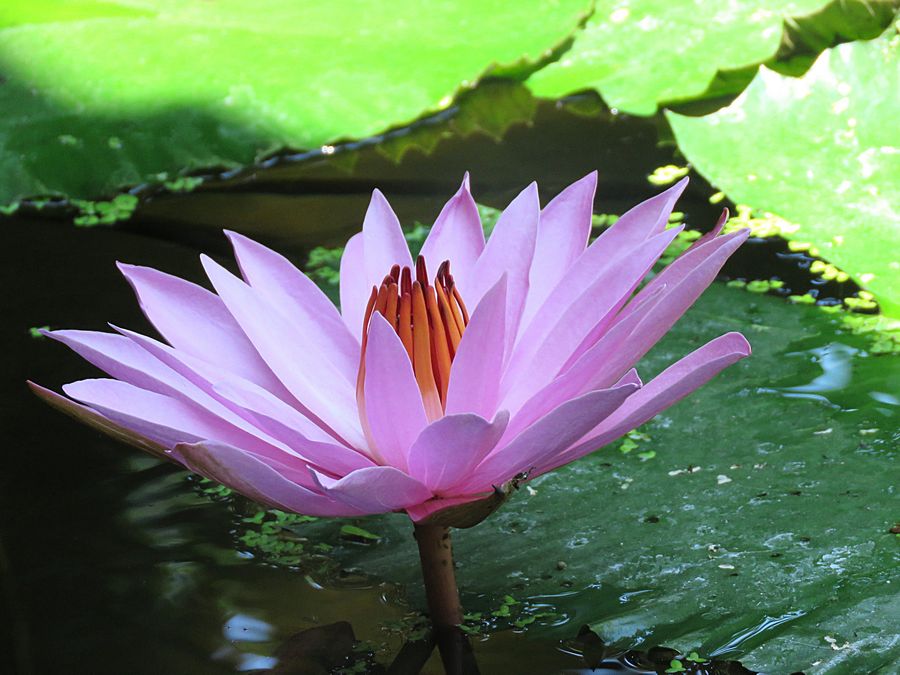
Lily pads in the restaurant garden.
We saw beautiful flowers everywhere we went.

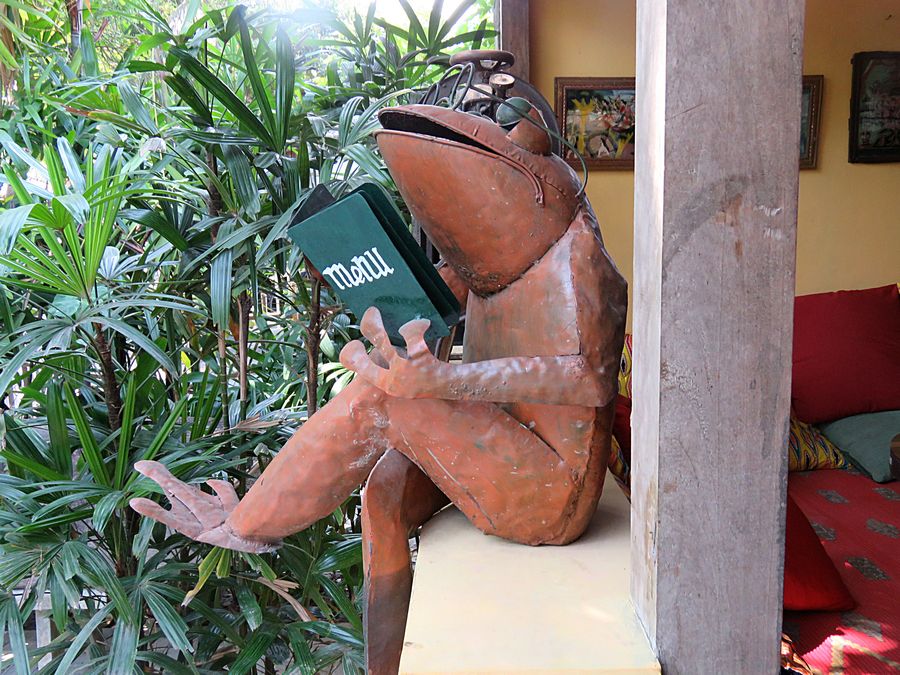
Frog reading the menu in front of the restaurant
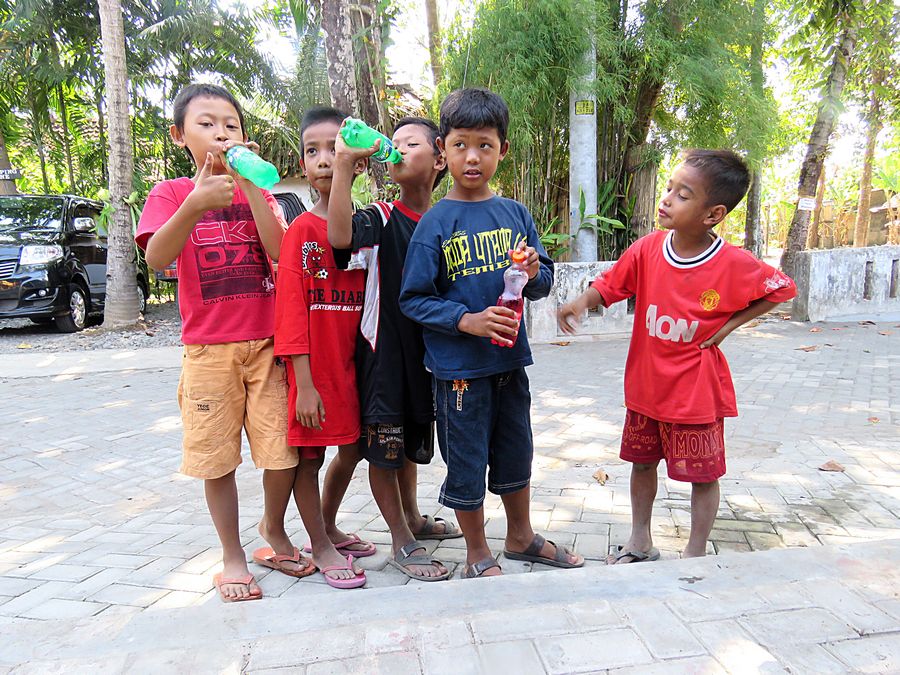
Local kids on the street outside the restaurant

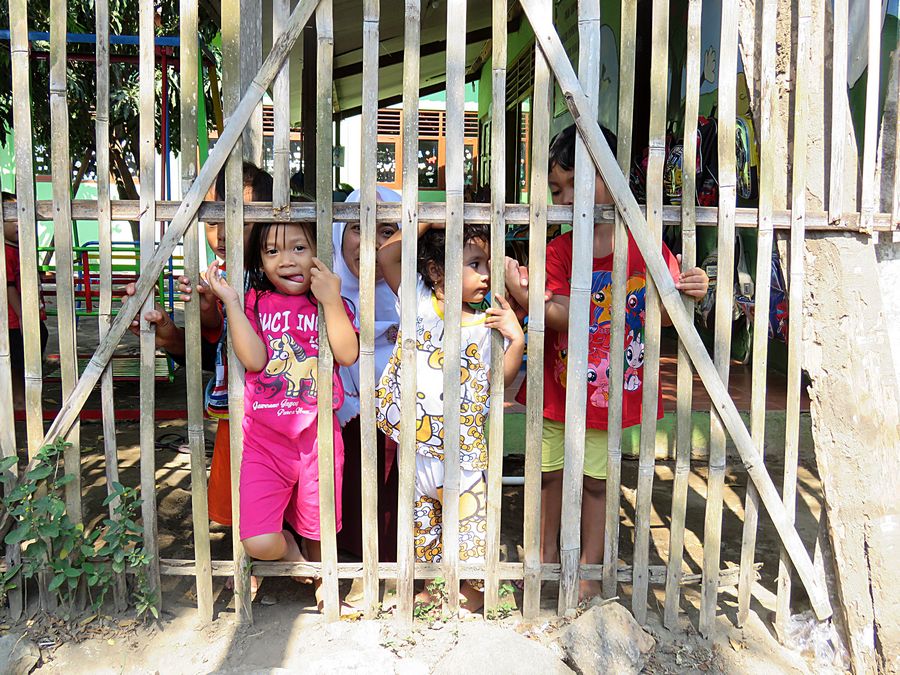
School kids excited to see us walk by

Once we reached Yogyakarta, where we stayed 2 nights, our tour
leader took us on a walk around the residential neighborhood behind our hotel.
This woman was taking care of a neighbor's child while the neighbor was working.
The woman told us the neighbors help each other out. Notice how she was so nice
to just come out and talk to us.
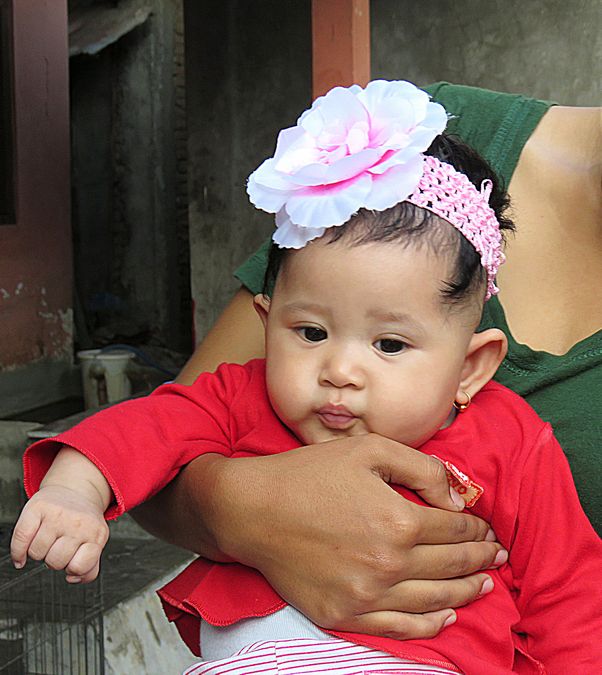

In the evening, our group of 16 was divided up to go
have dinner with a local family.
The family who hosted 6 of us for dinner: the wife, 2 daughters,
the husband,
with a friend of the family (who was quite funny) standing.
The husband's mother was busy cooking dinner for us. Extended families
typically live in the same household. This family's home had been in
the family for generations.
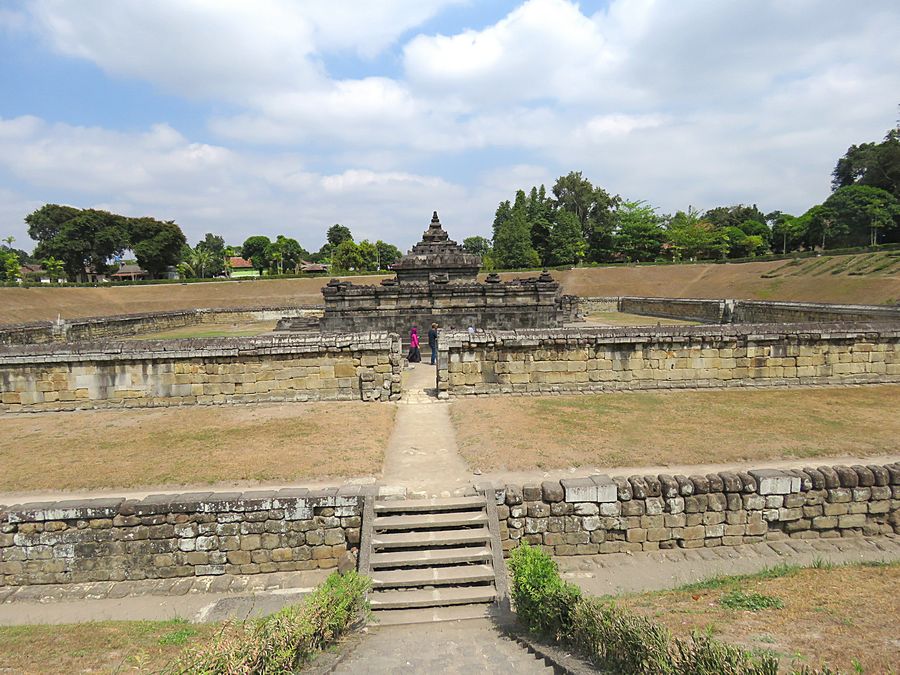
The following morning, we visited Sambisari, a Hindu temple constructed
in the 9th century. Until its accidental discovery in 1966, it remained hidden
under layers of rock and sand from Mt. Merapi's 1906 volcanic eruption.

Historians have concluded that Sambisari was a Shivaite Hindu temple built
around the first or second decade of the 9th century (circa 812-838).
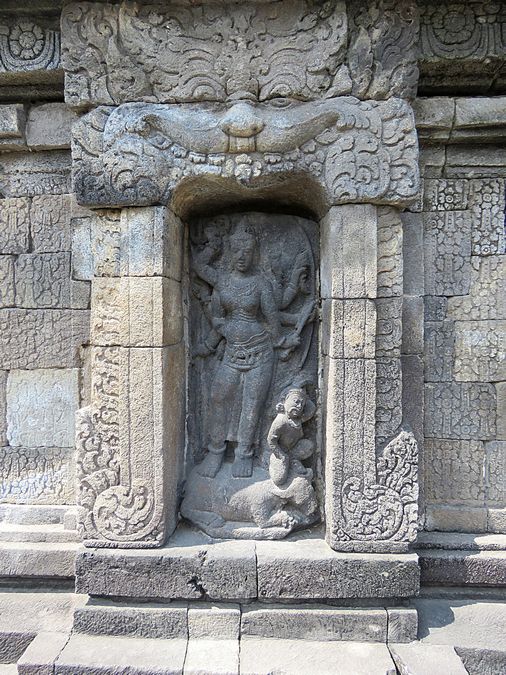
Around the temple walls are niches containing statues of Hindu gods,
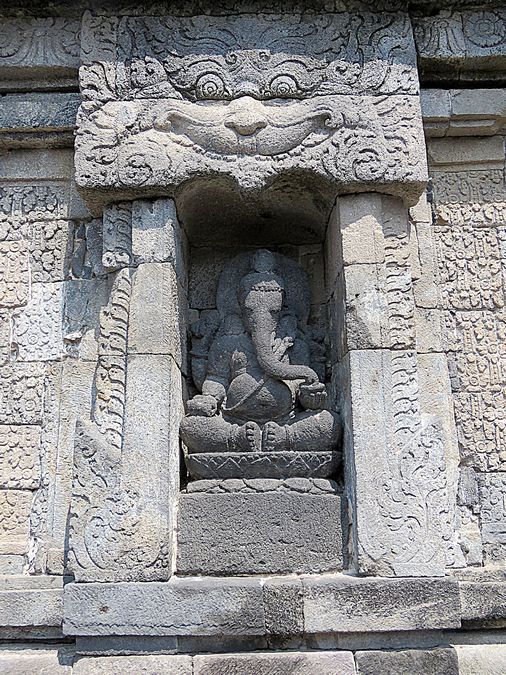
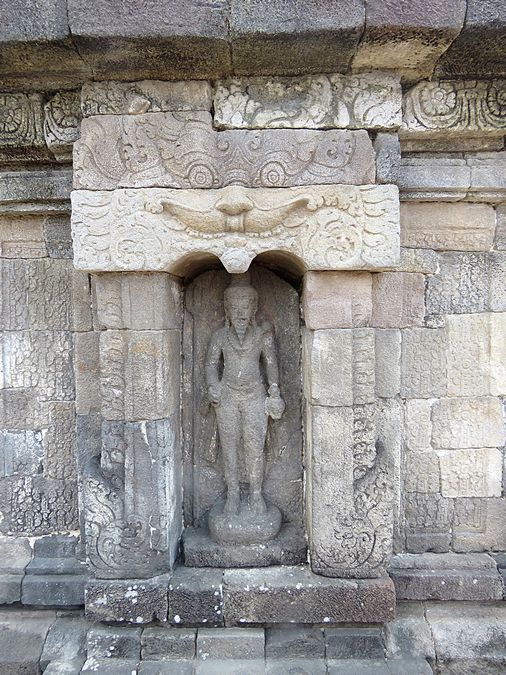
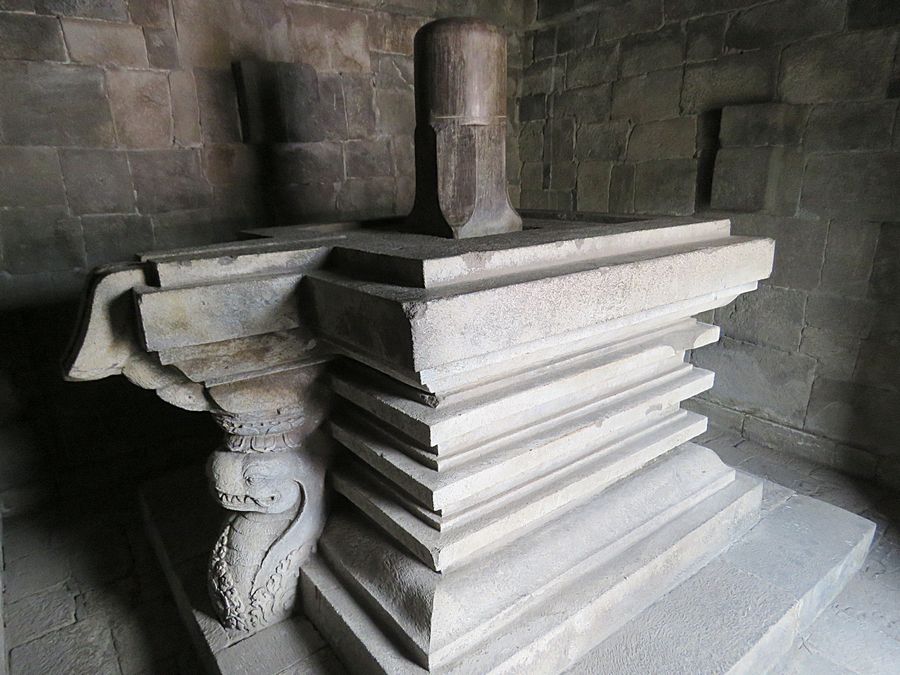
Yoni is a stylised representation of female genitalia representing the goddess
Shakti in Hinduism. Within Shaivism, the sect dedicated to the god Shiva,
the yoni symbolises his consort. The male counterpart of the yoni is the
lingam. The union of the yoni and lingam represents the eternal process of
creation and regeneration, the union of male and female principles, and all
existence. In art and sculpture, this union is represented by a cylinder (lingam,
often interpreted as a stylized phallus resting within a spouted dish (yoni).
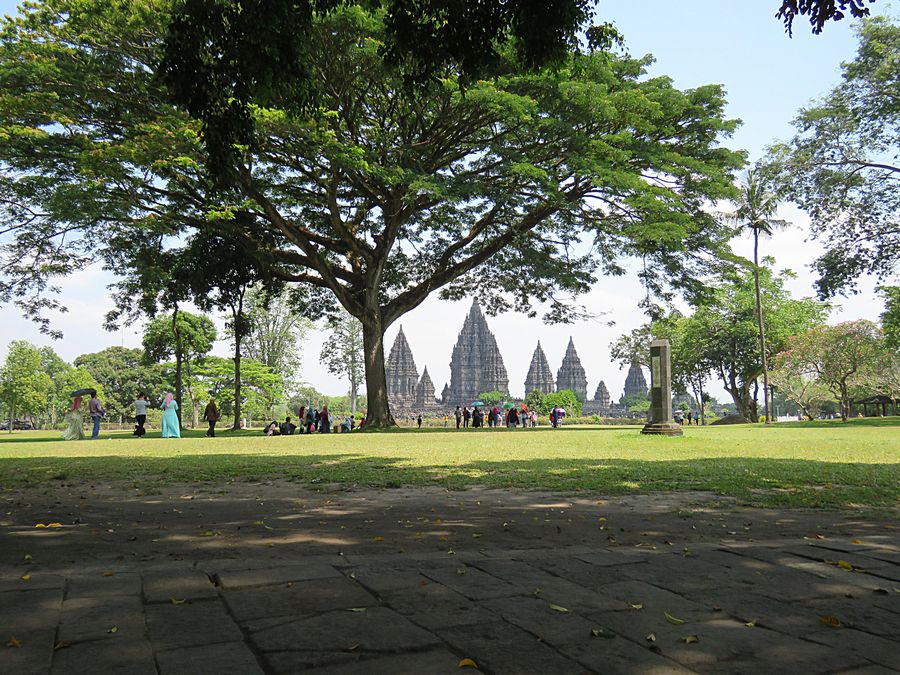
Prambanan in central Java. It is dedicated to the Trimurti, the expression of
God as the Creator (Brahma), the Preserver (Vishnu) and the Destroyer (Shiva).
It is characterized by its tall and pointed architecture, typical of Hindu architecture,
and by the towering 154 ft. high central building inside a large
complex of individual temples.
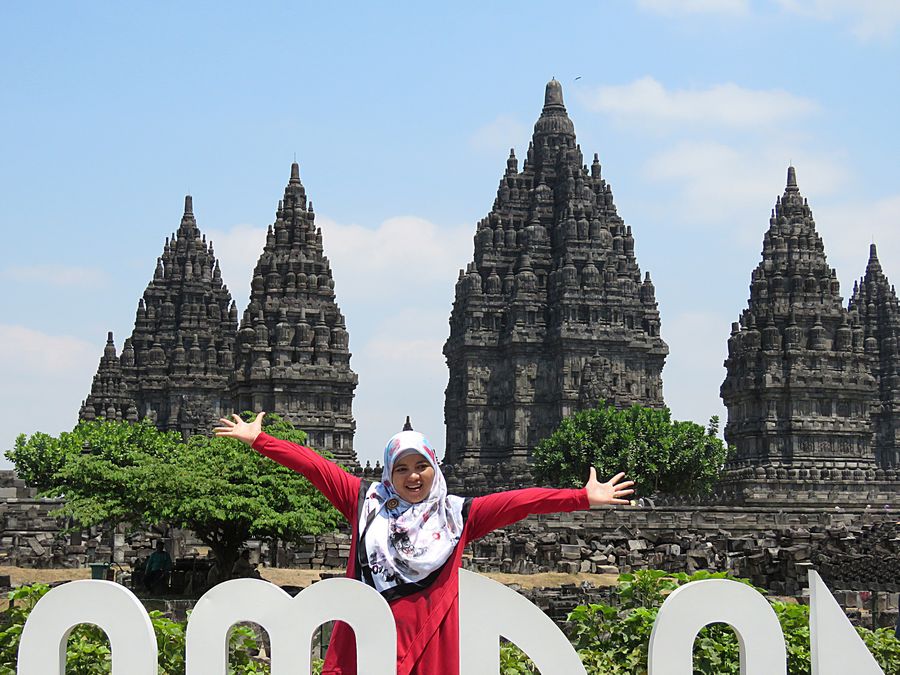
Here is a Muslim woman visiting this Hindu site,
being photographed
by her husband at Prambanen.
Since the reconstruction of the main temples in the 1990s, Prambanan has
been reclaimed as an important religious center for Hindu rituals and
ceremonies in Java. Balinese and Javanese Hindu communities in Yogyakarta
and Central Java revived their practices of annually performing their sacred
ceremonies in Prambanan after its reconstruction.
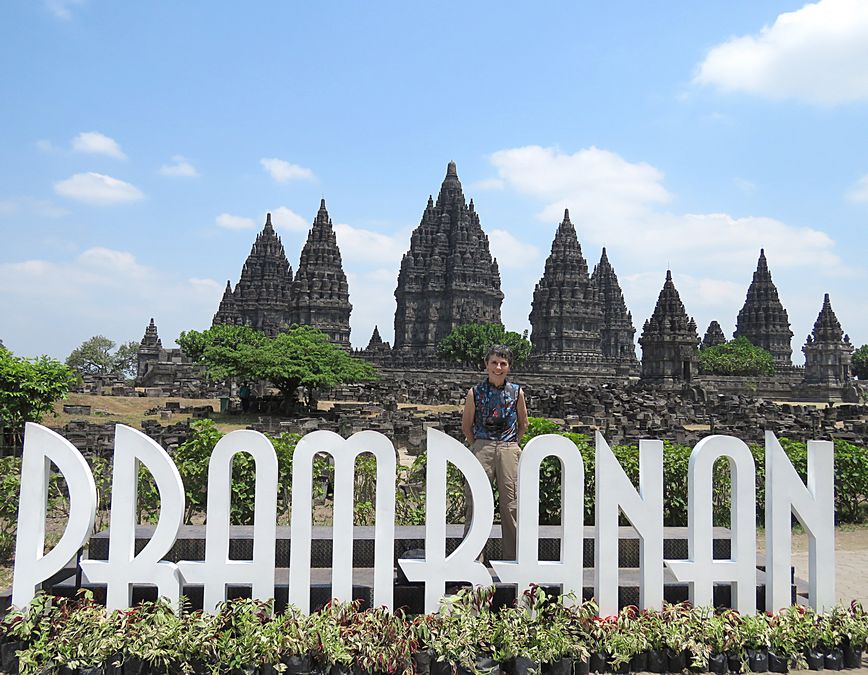
Pat at Prambanen
Built by the Sanjaya
Dynasty in the 9th century, a Hindu group thought to be
political rivals
to the Buddhist
Sailendra rulers in the area.
Prambanan is a UNESCO World Heritage Site, and
the largest Hindu temple complex in Indonesia.
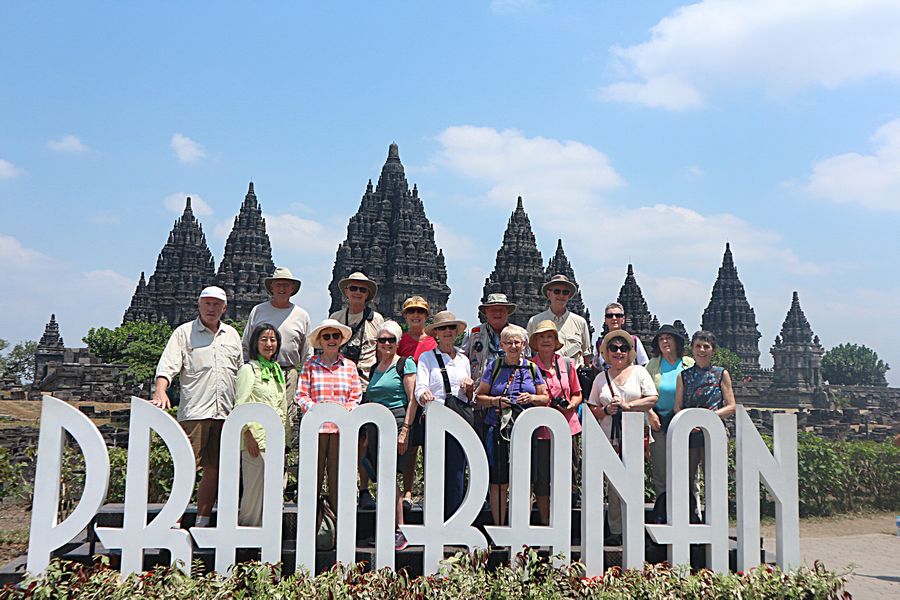
Group photo: Craig (from NC), Berdi (from CA), Dave (from AZ),
Robin (from AZ), Dave (from MD), Linda (from MD), Dorothy (from WI),
Patsy (from CA),
Jack (from OH), Joy (from OH), Elaine from NC),
Steve (from CA), Shirley next to Steve (from AZ), Iris (from CA),
Karen (from CA), Pat (from CO)

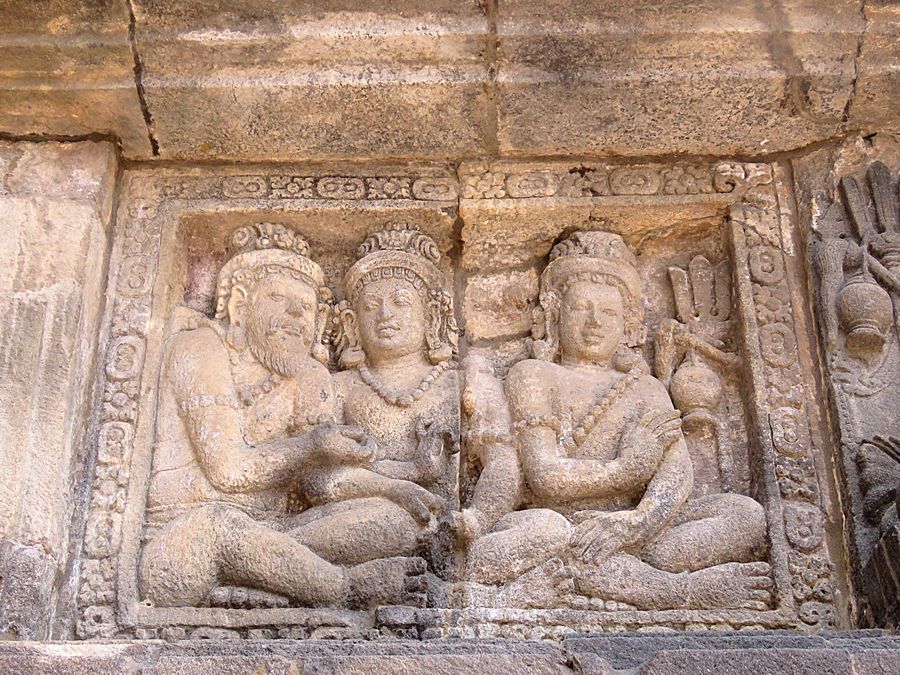
Carvings on the temples
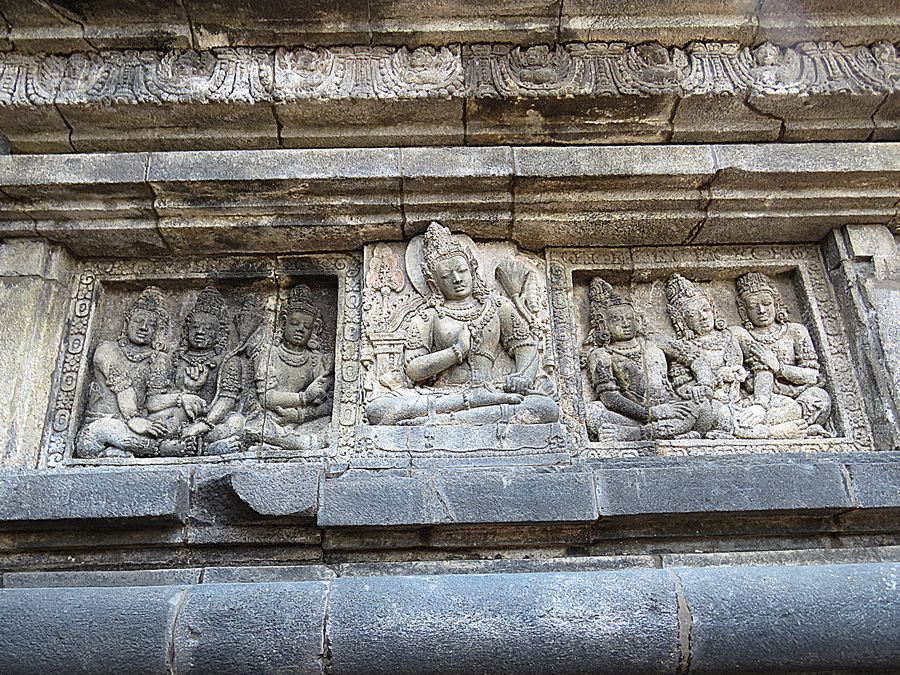
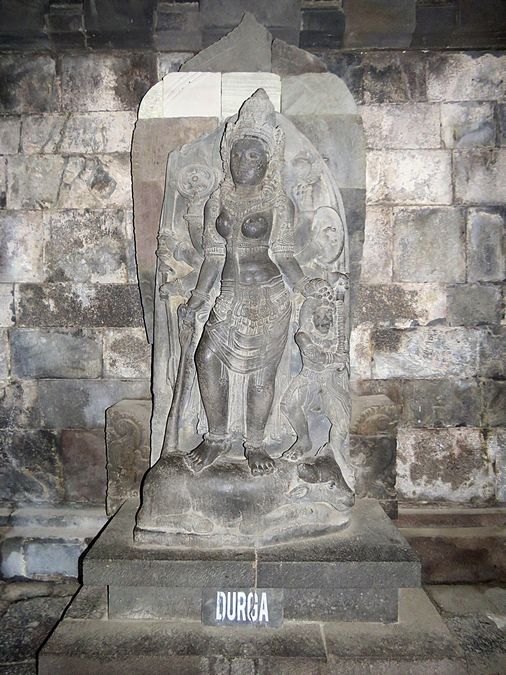
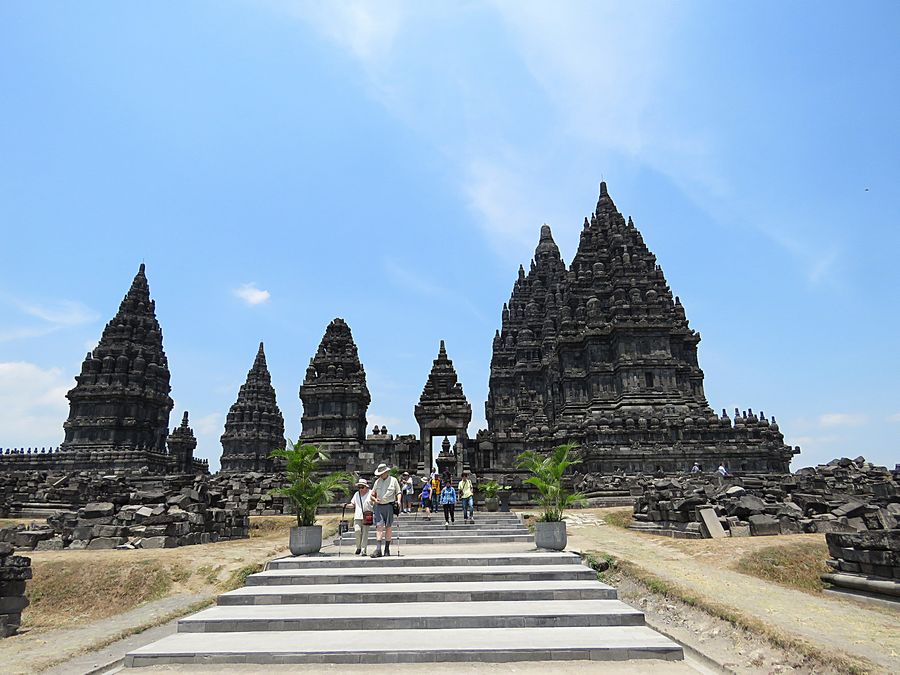
Exiting the back side of Prambanen
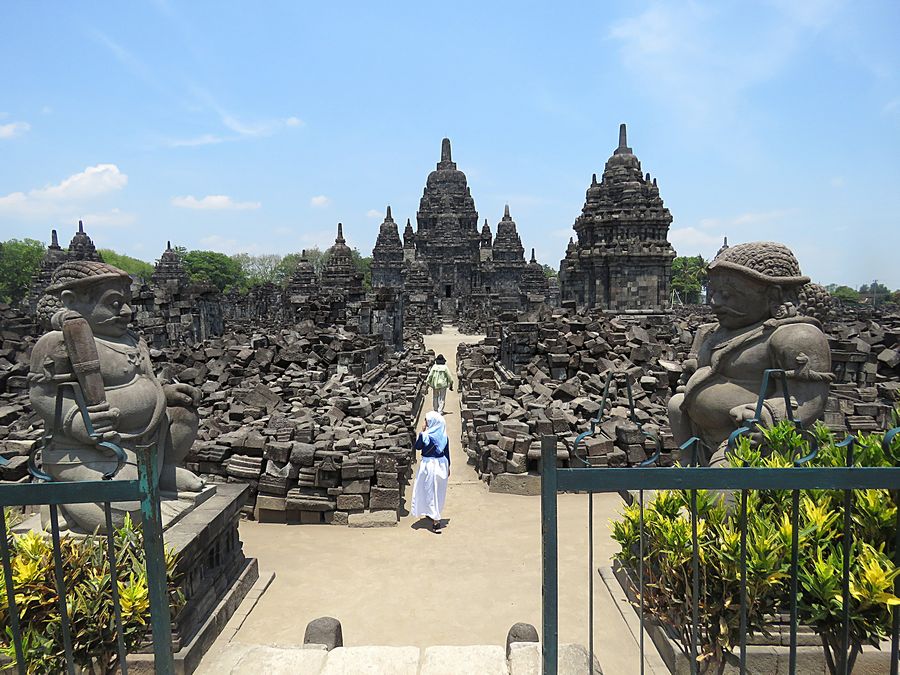
Near Hindu Prambanen is Sewu, an eighth century Mahayana Buddhist temple
in Central Java. The word for a Hindu or Buddhist temple in
Indonesian is "candi," hence the common name is "Candi Sewu."
Candi Sewu is the second largest Buddhist temple complex in Indonesia.
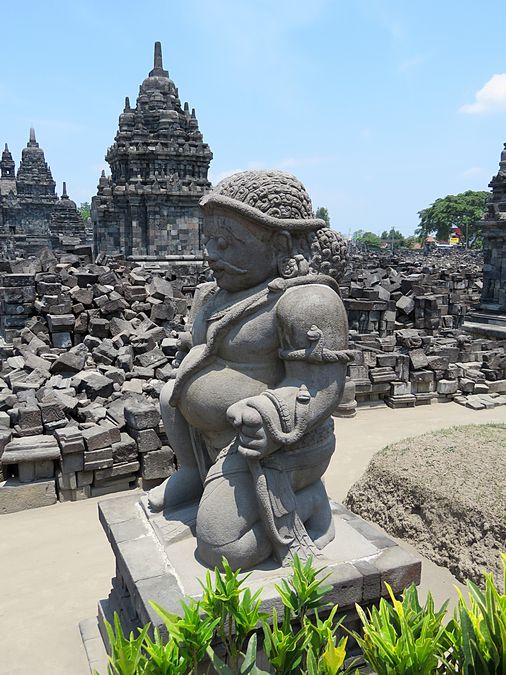

Cassowary bird, a flightless bird with 3-toed feet that was in a sanctuary
near Prambanan Temple and Sewu Temple

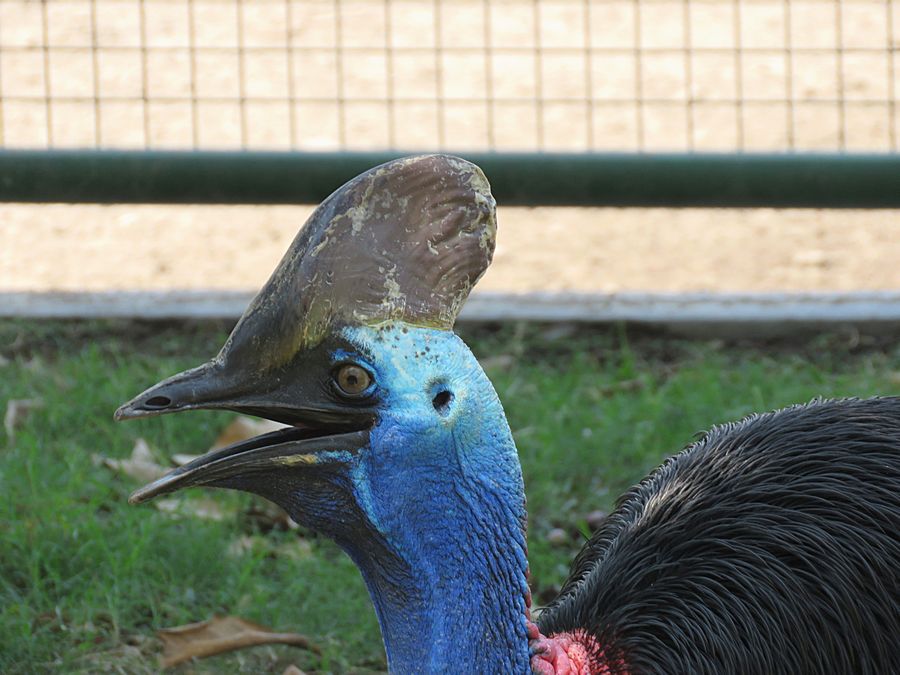
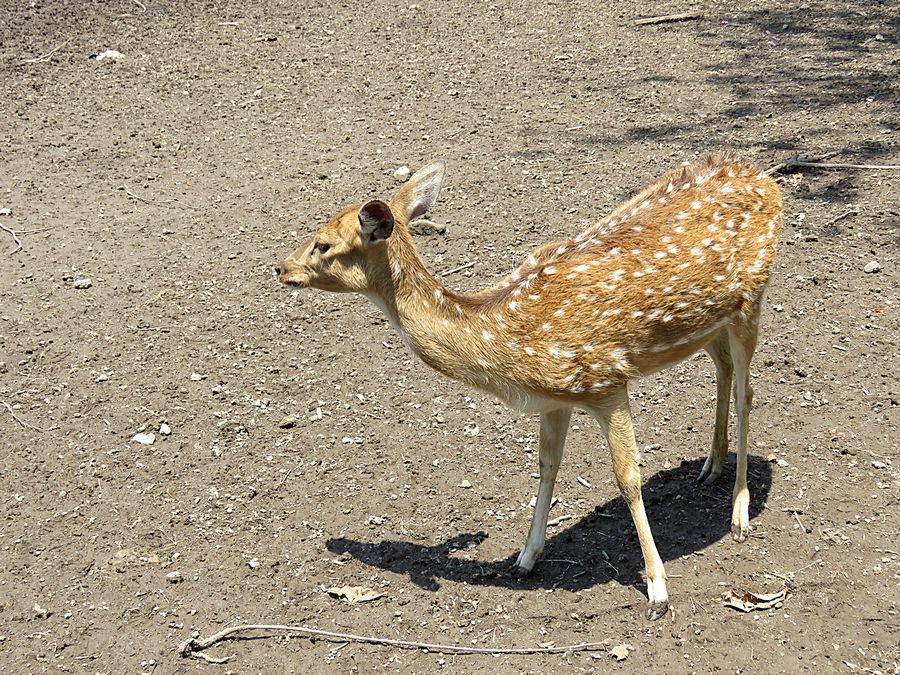
Deer in same sanctuary
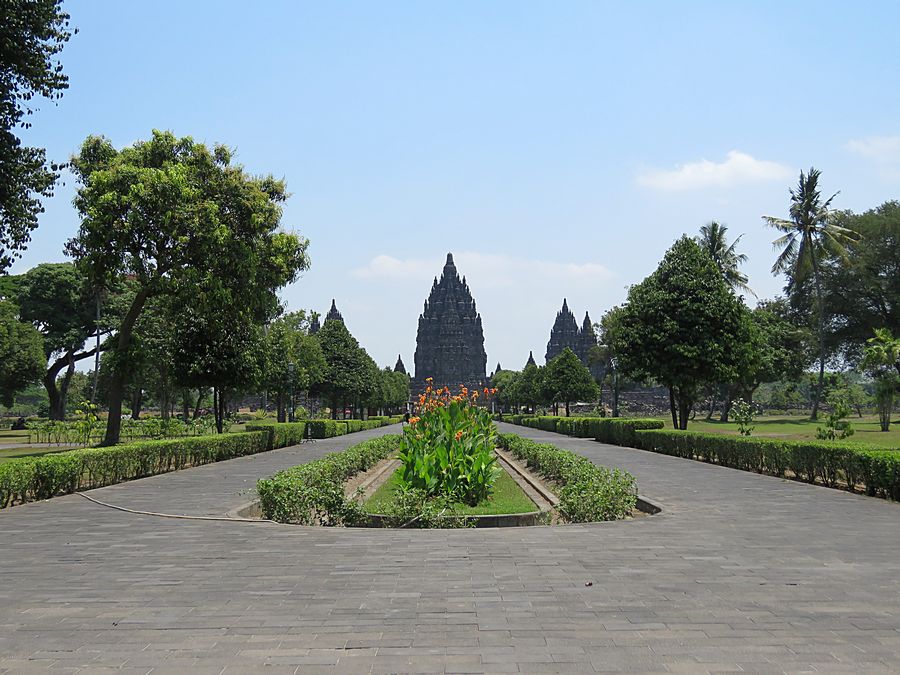
Final view of Prambanen Hindu Temple before exiting
Link to Page Three - Yogyakarta area
Pat's Home Page